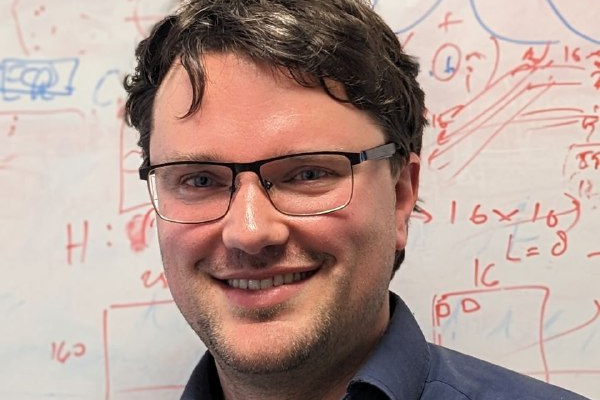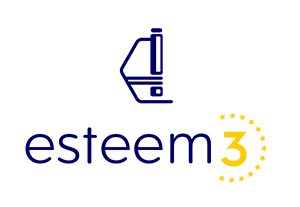ESTEEM3 interviews : Dieter Weber from Forschungszentrum Jülich

In this interview, Dieter WEBER will explain his background, his role, and his views about ESTEEM3.
Question 1 : Tell us something about yourself, your background, and your team.
I’m working at the Ernst Ruska Centre (ER-C) at Forschungszentrum Jülich. By training, I am a materials scientist, and I’ve always worked a lot with computers. At ER-C, I am managing a small group on software and data for electron microscopy. In that group, we have backgrounds in computer science as well as signal and image processing.
Question 2 : Tell us briefly about the last original research you have conducted.
The latest paper from our group (it was just accepted) is on live Wigner distribution deconvolution ptychography. That’s a well-known approach for phase reconstruction in, for example, 4D scanning transmission electron microscopy. This method is computationally intensive, and previous implementations required a lot of memory and only work on offline data. Our new approach processes data in a streaming fashion, requires only a fraction of the memory and runs much faster. That’s achieved by using clever mathematics to reformulate the original problem and by building an efficient implementation. You can find the details here.
Question 3 : Present your institute and its tasks within ESTEEM3 ?
The Ernst Ruska Centre is a large user facility and research institute for electron microscopy. It is run jointly by RWTH Aachen and Forschungszentrum Jülich. It operates a large fleet of very diverse transmission electron microscopes, in particular for challenging and non-standard applications. It includes activities in method development and electron optics, materials research and life sciences.
Question 4 : What are the most challenging aspects of your role and how do you overcome them ?
How broad the field is... One morning one dives into the source code of Nextcloud to solve issues related to upload or download of large files from external storage. In the afternoon one studies the application programming interface of a specific microscope to automate a task. Next day one dissects the mathematics of a phase reconstruction method to find an ansatz for scalable high-performance processing in a streaming fashion. That can only be solved working in a team that has diverse backgrounds and enjoys tackling new and unfamiliar tasks every day.
Furthermore, how long the road from a “proof of concept” implementation to a reliable, user-friendly and performant implementation is in product development. That’s endless hours of packaging, testing, writing documentation, writing bug reports, fixing bugs and outreach. Even to just keep a software project running while the underlying libraries are constantly updated feels like a fight against windmills sometimes. We are used to just double-click “setup.exe” and then start using the software intuitively, but it is a LOT of work to get there. Fortunately, this kind of work is more and more credited in science just like publishing research papers, and also supported by projects like ESTEEM3. It is a long road, but we can see results: Just last week I was at a measuring campaign for live high-performance 4D STEM data processing, including live ptychography and novel instrument calibration methods to obtain reliable, standardized metadata for the measurements. All this was pure science fiction when ESTEEM3 started, now these methods are reality, also through support from ESTEEM3.
Question 5 : What is the added value of ESTEEM3 for the European research ?
First, it encourages scientists to travel for measurement time using the “Transnational Access”. That way it brings new people in touch with all the different microscopy capabilities in Europe, helps to spread know-how, and brings interesting new challenges to the microscopy facilities.
Second, it fosters exchange between the facilities. Many issues such as interoperability of software and hardware or communication with vendors about requirements for next-generation instruments require alignment between different users, and interesting projects can emerge from bringing different people with different backgrounds and skill sets together.
And third, through Joint Research Activities it helps tackle larger, common interests that would be too large for individual institutes or groups by providing funding and a platform for outreach and collaboration. As an example, ESTEEM3 members are quite active in Open Source software development, such as contributing to the HyperSpy ecosystem or the LiberTEM project: https://www.esteem3.eu/Software. Such Open Source software packages are critical for Open Science and also to allow small and medium enterprises (SMEs) to enter the market without having to develop an entire microscopy software stack on their own.
Question 6 : What do you expect for the future of the project ?
I hope there will be some form of follow-up! That means opportunities for users to access the different facilities in Europe, including support for traveling; a platform for people from different facilities to meet and exchange; and funding for overarching long-term activities that support the entire community and beyond, such as developing and maintaining interoperable and user-friendly Open Source software.
